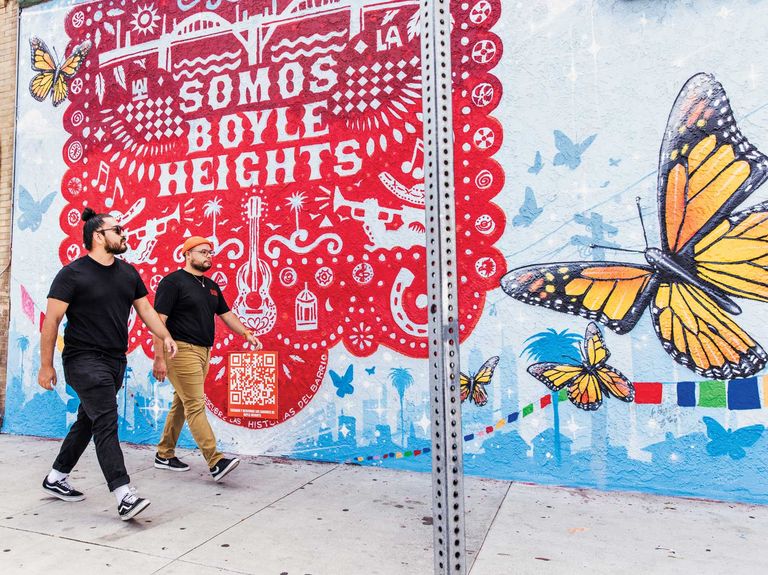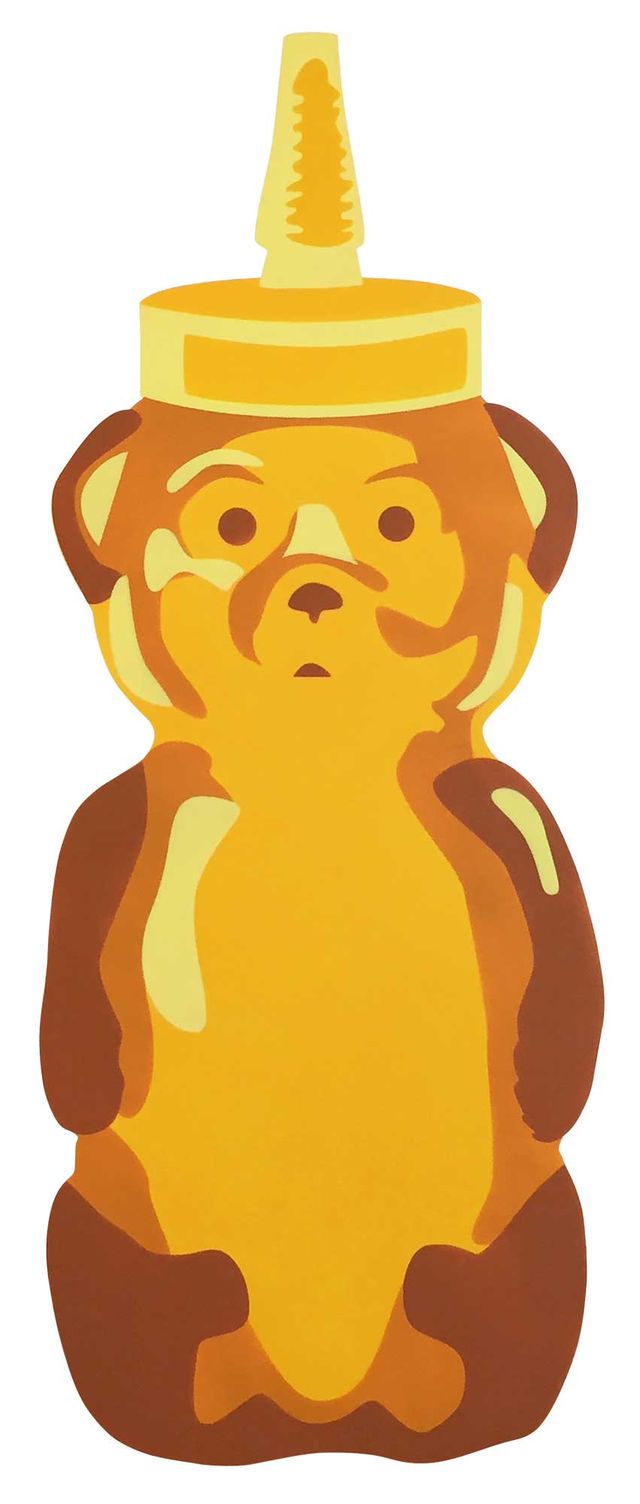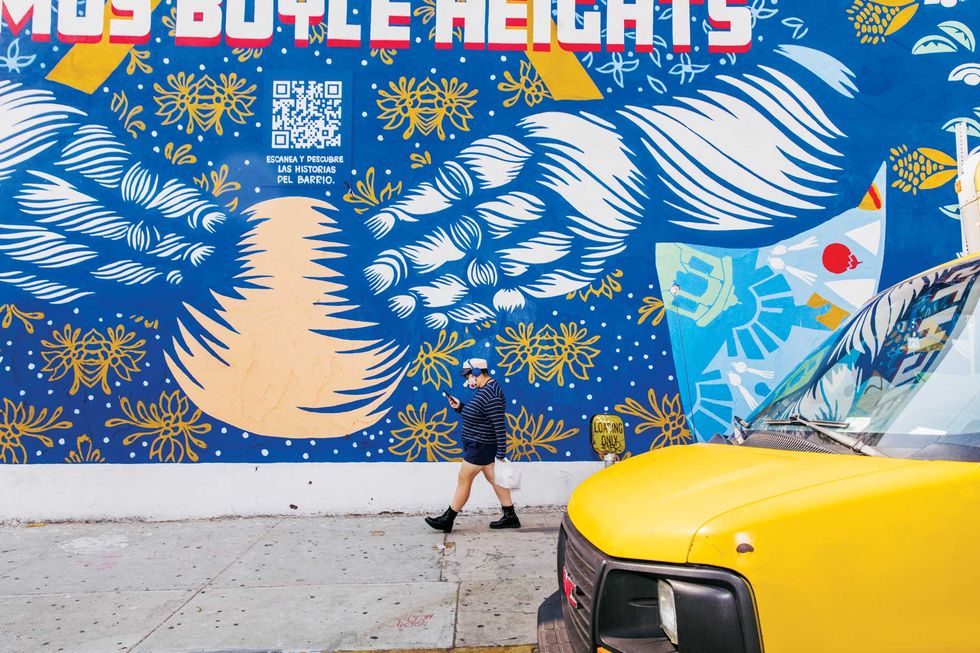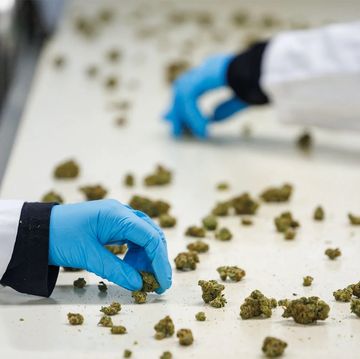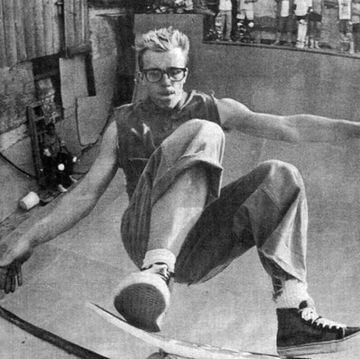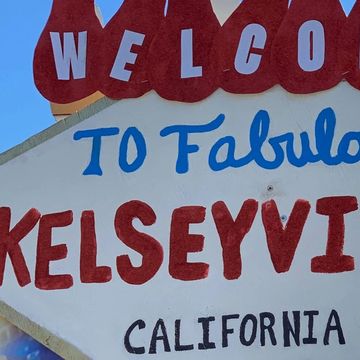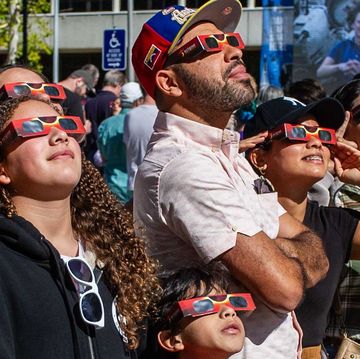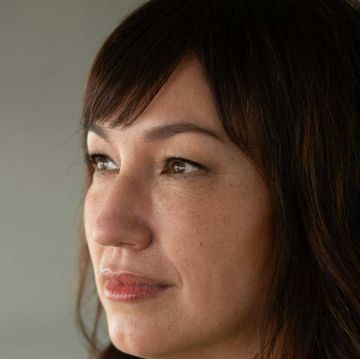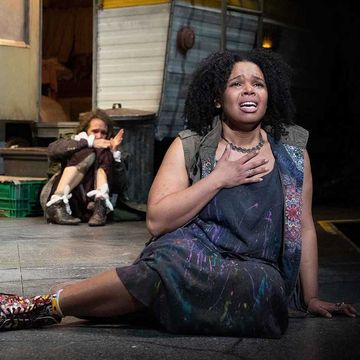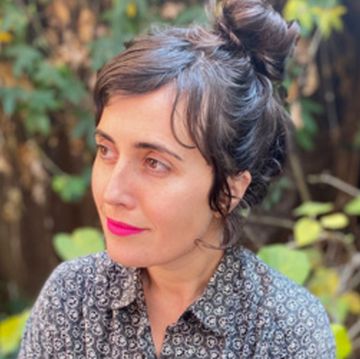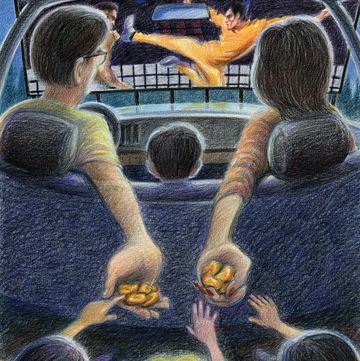It’s 4 p.m. in Boyle Heights. Cesar Chavez Avenue, which barely hummed with traffic minutes before, pulsates with the synthesized drums of reggaetón from cars leaving Felicitas and Gonzalo Mendez High School. Students on foot, hunched under impossibly large backpacks, unburden themselves at bus stops; one group laughs loudly, jolting awake a dozing mariachi. Others duck into mom-and-pops like Guisados, where a man on a ladder slathers green paint onto paneling above the store’s facade. Holding her child’s hand in one of hers and a tray wrapped in tinfoil in the other, a woman saunters out, letting the buttery air of homemade tortillas escape into the streets. Vendors claim sidewalk corners, hawking fruit cups to the hungry teens.
Keeping an eye on the afternoon rush are people pictured in murals gracing the sides of restaurants, civic centers, gas stations, and apartment buildings. Their gazes are warm, exultant, understanding, like those of protective ancestors watching over the neighborhood: veteranos throwing out peace signs from black lowriders; the profiles of Aztec lovers adorned with green and pink headdresses; a woman in a red dress clutching her heart as she sings to the accompaniment of famed musicians Margarito Gutiérrez and El Piporro.
This article appears in the Winter 2022 issue of Alta Journal.
SUBSCRIBE
At the corner of North St. Louis Street and Cesar Chavez, in this storied neighborhood, there’s yet another mural, this one masking the side wall of El Norteño de Savy Store. It depicts the arms of a woman diving down from the sky into a ball of masa. Limes dance around her, and blue nopales shimmer against a yellow background. The painting seems to agree with the rest of the art in the neighborhood until you spot the conspicuous outline of a QR code pasted below the phrase “Somos Boyle Heights” (we are Boyle Heights) at the top of the wall.
Scanning the QR code with your phone leads you to a short film—also titled Somos Boyle Heights—that highlights influential figures in the present-day community: a photographer, a barber, a restaurant owner, a teacher, and a handful of others. Each one delivers an uplifting message about the history and future of Boyle Heights and the resiliency and creativity of its people. The video features gorgeous cinematography and moves at a good pace. If it weren’t for one detail—the title card revealing that the film is presented by DoorDash—it would feel like a powerful grassroots effort to inspire neighborhood pride. The video ends with the tagline “Delivering the stories of the barrio.”
DoorDash, the largest food delivery service in the United States, has also taken over two walls nearby, similarly covering them with colorful images celebrating the people, food, and culture of Boyle Heights. These murals are either a risky, even bold, bit of marketing or a genuine addition to the Latinx neighborhood. No matter how striking the artwork, if DoorDash’s corporate messaging is perceived as too overt, they’re likely to be defaced and their creators derided as sellouts. In other words, these three-month-old murals could be painted over at any time.
TAG, YOU’RE IT
Works of street art are often trashed for not meshing with the ethos of a neighborhood, for coming from the outside, or for simply being new. Curiously, the people who most routinely damage artists’ works aren’t just disgruntled residents. They’re other artists.
Shepard Fairey’s Workers’ Rights was famously tagged by graffiti artist Ecks in 2016. Adrian Wilson’s work was recently wrecked by paint, and even people as famous as Banksy have had pieces damaged by other artists hoping to make a statement, or just a name for themselves. Nothing in recent times, though, comes close to the vitriol experienced by San Francisco street artist fnnch during the pandemic.
Rumored to be a white, straight male who had worked in the tech industry (all true), fnnch had long attracted the ire of some residents and local artists. This past spring and summer, his most famous art—a series of honey bears—which was already widespread in the city, became nearly ubiquitous after people started placing the bears in their windows for kids to count as part of a social media challenge he designed during the COVID-19 lockdown. Defenders argued that fnnch’s honey bears were simply fun and Instagrammable; critics viewed them—owing to fnnch being a white, straight, male (former) tech worker—as part of the sweeping gentrification occurring throughout the city.
The tension peaked in April when a local multimedia artist and activist who goes by DoggTown Dro confronted fnnch as he power-washed the words “Fuck Fnnch” off the honey bears he had been commissioned to paint on the SF LGBT Center. Dro demanded that fnnch explain what he “was doing to offset his effects of gentrification.”
In a video of the exchange made by Dro, fnnch attempts to converse with Dro about how his work has helped artists in the area (mostly through charity and by turning unused spaces into revolving canvases) but is shouted over and repeatedly told by Dro that his honey bears have become “synonymous with gentrification.” Dro’s closing statement is that fnnch, who originally hails from Missouri, and his honey bears are no longer welcome in San Francisco. Dro points to the defaced wall as proof. He later posted the video to Instagram, where it has received more than 146,000 views.
By the time Dro approached fnnch, many honey bears had already been defaced, painted over, or tagged with obscenities. The most popular and tangible rejection of fnnch’s work came in the form of Ricky Rat (a cartoon character by a street artist also called Ricky Rat), who began appearing next to the honey bears. Often, Ricky Rat would ridicule a honey bear with a question, like “What’s your favorite taqueria in the city?” A speech bubble slapped next to the honey bear would read, “Chipotle.”
In August, a fresh wave of criticism rolled in when San Francisco–based home furnishings and kitchenware giant Williams Sonoma announced a deal with fnnch to print his honey bears on spatulas, bowls, cups, and other kitchen items. Fnnch did not disclose how much he stood to gain from the deal, which sparked further outrage in the street art community. If fnnch wasn’t fully branded as an interloper artist before, the Williams Sonoma partnership left no doubt. Wiped away was any debate about the creative merits of his work.
SHEEP’S CLOTHING
Just two months before Williams Sonoma tapped fnnch for its new line of products, DoorDash, also based in San Francisco, had stealthily rolled out its “Somos Boyle Heights” marketing campaign in Los Angeles. The timing of the two events highlights the uncanny symmetry between them. I was struck that a good-intentioned individual like fnnch could attract such widespread disdain, yet DoorDash, a corporation valued at $72 billion, could escape it.
A DoorDash spokesperson sent me a written response to explain how the company insulated itself from backlash: “Our mission at DoorDash has always been to empower local communities, and we’re excited to further this mission by celebrating the incredible story of the historic and iconic Boyle Heights neighborhood.” Murals are “a well-known way people from this community express themselves,” the spokesperson added.
Pete Galindo, a Boyle Heights native, noticed in June that the side wall of Cerda’s Upholstery, on First Street, where a hokey brown-and-beige artwork had advertised the Cerda family’s business for decades, had been painted over. Galindo is the newly named director of the Social and Public Art Resource Center’s Great Wall of Los Angeles Institute; his chief responsibility is to oversee a half-mile addition to the 2,754-foot-long painted history of California in the San Fernando Valley that the institute is named for. Designed by Judy Baca, painting began in 1974 and was completed in 1983, with more than 400 youths and their families joining the effort. Galindo echoes the spokesperson in describing how a nationwide food delivery service has sidestepped, so far, the mess that engulfed fnnch. “DoorDash didn’t assert itself the way fnnch did,” Galindo says.
He tells me that DoorDash essentially borrowed a move from Coca-Cola’s playbook of 20 years ago. The soft drink behemoth sponsored high school art contests in which, Galindo says, the theme was to “imagine a world where Coke brings everyone together.” He recalls that Coca-Cola then commissioned graffiti artists to transform the best student drawings into large-scale public works. By the time the drawings became murals, Coca-Cola had already left the scene, the only evidence of its meddling being the content of the art itself.
“DoorDash was even more discreet,” Galindo says. “When I look at this campaign, I recognize that [DoorDash] saw an opportunistic way to have cheap billboards. It reminds me of the mid-’90s in Westwood, when film studios took advantage of a city ordinance that did not allow billboards in certain spaces but also stated that a wall with less than 3 percent text was considered a mural—anything more would be deemed a billboard. So these film studios would paint these massive billboards with faces of actors and actresses we know on them and just slap a date on it. When the city said they couldn’t put billboards there, the studios would counter with ‘They’re not billboards—they’re murals.’ ”
Galindo does not consider the new DoorDash pieces to be a true part of L.A.’s street art tradition because they do not challenge the status quo or explore pressing issues within the neighborhood—things that L.A. murals have historically done. Yet Galindo is reluctant to dismiss the paintings outright. Put simply, the works are stunning. Even more crucial: many of his friends have their faces portrayed in the murals or helped paint them. How, then, can Galindo, or anyone from Boyle Heights, criticize the work? It would be akin to insulting his neighbors or attacking them for trying to earn money from their art.
If nothing else, DoorDash’s strategy is clever.
Pulling off community acceptance like this would be impossible for fnnch. In the world of California street art, he’s been canceled, and it’s likely that he’ll be forever labeled an outsider. And while fnnch’s deals with Williams Sonoma and other organizations have helped him financially, his treatment by some of his fellow artists gets me thinking that this could set a dangerous precedent.
What about those street artists who risk everything by leaving home—in foreign countries or simply other cities—to try their luck in metropolises like San Francisco and Los Angeles? Should an up-and-coming painter from a small town in Arizona not even bother moving to the Golden State? Should they just stay put and be satisfied with opportunities in their hometown?
FOR ART’S SAKE
It’s easy to sympathize with local artists who are reluctant to embrace their newly arrived peers. The effects of gentrification undeniably change a community. When newer artists take over and blanket familiar spaces with random images that don’t represent or speak to the community, it can be triggering for some. But the us-versus-them mentality on display in street art scuffles is akin to surfers claiming that their beach’s waves are for locals only.
Adriana Carranza and Alfonso Alceves are the husband-and-wife team behind Kalli Arte Collective, which painted the DoorDash mural of the woman rolling masa (my favorite of the three). The entrance to their studio is protected by a metal security gate on a hill at the edges of Boyle Heights and City Terrace. Far below, Boyle Heights sprawls over a series of mounds, the entire neighborhood looking like a master Lego build. A red sun slinks behind downtown’s skyscrapers.
Inside the building lies a cavernous space shared with other artists; its empty white walls, concrete floors, and artificially frigid temperature call to mind an empty meat locker. Yet the soulless climate evaporates once Alceves pushes the door open to Kalli’s area.
“Welcome to our studio,” he says, extending a hand toward a mélange of cutting tools, masks, crucifixes, and reproductions of pre-Columbian ceramics cluttering the walls and shelves. A bulky cutting board sits in the middle of the room, its ocean-blue base tattooed with stickers. The couple’s grown daughter, also an artist, sketches at her corner desk. Seated at a round table diagonally across the room, Carranza types away at a computer. Papel picado and prints depicting nopales in various colors are stacked behind her in messy piles. The place has the kind of energy that makes you want to leap up and start making things.
Neither Alceves nor Carranza worked directly with DoorDash; popular muralist Levi Ponce asked them to contribute to the project. As far as they know, Ponce was the only artist in contact with DoorDash. It sounds like the distance between the artists and the company could have provided creative freedom, but Alceves quickly dismantles that thought. He explains that DoorDash already had an idea of what it wanted and that his job was to execute that vision.
“I got a little frustrated towards the end, but that’s just me,” Alceves says. “I always try to think there’s a bigger picture, like being able to help my community, my family, in my hometown. I just had to focus on that and work through it.”
Alceves studies me for a reaction. His eyes are warm and compassionate, and even when he expresses irritation, there’s a thoughtfulness to him. Carranza, even more so, is cool and relaxed. She speaks in a measured voice, enunciating every syllable clearly and slowly. However, the pair reveal strong emotions when I mention the mural’s QR codes.
“Corporations have done the wrong things for a long time. They’ve appropriated, and they’ve abused, and they’ve taken the wrong avenues with different cultures and shit like that,” Alceves says. “In the end, that’s how I got over that whole QR code shit. The work is not about that. I mean, yeah, it’s there, but odds are it’s going to be 1 out of 100 people that are going to be able to see and reach that shit.”
Carranza adds, “I want to believe that this whole process of us deciding to do this and the way it happened was with good intentions. What we put out there—what everyone did, not just us but the other artists as well, what they did—was very representative of our community. And because of that, we haven’t seen any tagging on it, and that says a lot too.”
Indeed, Kalli Arte Collective’s work not being tagged suggests that the community has been willing to accept the mural as its own. That is a good thing. Undoubtedly, DoorDash bet on this being the case. The company’s executives rolled out this project with a specific vision and found artists to execute it for a target audience.
NEIGHBORHOOD WATCH
Saúl González, a co-owner of House of Trophies and Awards in Boyle Heights, tells me that the pop of color from one of the new murals makes his day each morning. Still, he remains suspicious of DoorDash. “There has to be a catch,” he says. The longer he and I study the murals, the more he complains about their corporate sponsorship. González says, “Boyle Heights used to have Japanese, Jewish, Russian, and other communities. If they [DoorDash] want to tell the story of Boyle Heights, why aren’t they represented here too? What’s the deal with this ‘somos’ and ‘delivering stories of the barrio’? Here’s the shame: not everyone here speaks Spanish.”
Three teens near the mural on Cesar Chavez are more supportive. One of them, 16-year-old Angel Stopani, points to the artwork while he discusses it. To him, the food depicted in the mural is not just a creative flourish but something that captures the spirit of the neighborhood: “So what if DoorDash backed this? They’re the ones that drop off your food, right? That’s us. That’s our community. Look at all the food places around here.” His buddies laugh when he raises a greasy bag of french fries from Chavez Pollo and Burger.
Bryan Diaz, who’s 15 and the tallest of the group, says, “I think [the mural] is really nice. I just don’t want someone to tag it. So far, it seems like they have respect for the art.”
Stopani nods in agreement: “They should leave this alone. Sometimes fools get out of pocket and trash stuff.”
That’s true, but the bigger threat for street art is identity politics. DoorDash’s acceptance and fnnch’s rejection expose a potentially poisonous relationship between corporate America and small neighborhoods, especially neighborhoods of color, in which any cultural innovation or artistic expression that doesn’t fit a commercial narrative could be smothered and tossed aside. Imagine a mixed-race artist from Boyle Heights being rejected from a project similar to “Somos Boyle Heights” because their work is not deemed “Hispanic enough” or doesn’t celebrate the neighborhood in a way that a company thinks it should. It’s not unreasonable to worry about this. What’s to stop powerful companies and other institutions from dictating to artists even more heavy-handedly in the future?
To be clear, the solution is hardly more honey bears on walls. At the same time, the immediate rejection of newer artists in a particular neighborhood could start to be a defining characteristic of that neighborhood—and, consequently, its art. It seems that by constraining and defining themselves, street artists might unwittingly make themselves more susceptible to corporate influence and manipulation.
One way forward is for street artists to engage in conversation with one another, to work together to imagine their streets as their shared canvases. If they don’t, they risk being told what those canvases will look like. “The conversation really needs to go deeper,” says Galindo. “What I’m fearful of is that the conversation is going to become more superficial and that what we have is going to be whitewashed further. So what I’m hoping for is that artists will ask for more. And if they do so, as an organization we’ll be behind them, backing them up.”
After all, street art is most potent when it’s by, and for, the community. •
Ajay Orona is an associate editor at Alta Journal. He earned a master’s degree from USC Annenberg’s School of Journalism in 2021 and was honored with an Outstanding Specialized Journalism (The Arts) Scholar Award. His writing has appeared in Los Angeles Review of Books, Ampersand, and GeekOut.
